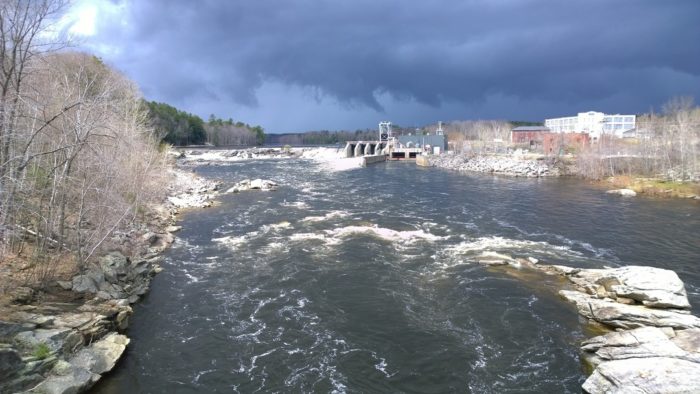
Image Credit: LG Baines
By MATT WEISER
Humanity got its first large-scale electricity thanks to hydropower. On August 26, 1895, water flowing over Niagara Falls was diverted to spin two generators, producing electricity to manufacture aluminum and carborundum. Since then, millions of dams have been built worldwide, transforming the energy of moving water into the energy of moving electrons. When we need it, the water spins magnets past a coil of copper wire to give us heat, light, and entertainment.
The basics of hydropower haven’t changed much in 120 years. But now scientists and engineers are taking a fresh look at hydropower to try to make it more environmentally friendly.
That’s because, while hydro provides 85% of the world’s renewable electricity, it comes with a cost. Along with more commonly known issues such as habitat disruption, recent studies suggest reservoirs created by hydroelectric dams are a significant source of greenhouse gas emissions.
The U.S. Department of Energy is among those working to make hydropower better for the environment.
“Not only DOE, but really the entire hydro industry has agreed that more work needs to be done,” says Hoyt Battey, manager of market acceleration and deployment for the agency’s Wind and Water Power Technologies Office. “Hydro is going to continue to grow and has a lot of future opportunity that most people just aren’t aware of.”
Current global hydropower production is estimated at 1,700 gigawatts, providing about 2% of total electric generating capacity.
In the U.S. — where in 2014 hydropower provided a little more than 6% of total electricity generation and made up about 48% of renewable generation, according to the DOE — hydropower capacity grew by 1.5 GW in the decade prior to 2015, reaching a total of 100 GW, according to the Energy Information Administration. (Wind, solar, and natural gas capacity grew faster, while coal and oil declined and nuclear was essentially flat.)
In a Hydropower Vision report released in July 2016, the DOE estimates U.S. hydropower could grow a surprising 50% by 2050.
Thousands of new projects are planned
Meanwhile, a 2015 study in the journal Aquatic Sciences estimated that at least 3,700 major new hydroelectric dams are proposed or under construction worldwide, most in developing countries.
As a result of this surge in hydro development, an international coalition of governments, utilities and non-governmental organizations launched the Hydropower Sustainability Assessment Protocol in 2011. These voluntary standards were created as a road map to make new hydropower more environmentally benign and less harmful to local communities, which are often displaced or compromised by large projects.
It remains to be seen how effective this effort has been. More than 60 other NGOs have criticized the protocol, saying it is not rigid enough to ensure that sustainability goals are met and ignores a number of concerns, including ones related to human rights and the risk that dams could set off earthquakes.
Indeed, many environmental groups would prefer to see no new dams built. They argue that other sustainable energy sources have evolved as better alternatives.
“Wind and solar have become cheaper in many countries, they are less risky in climate terms, they can be deployed more quickly, and they have smaller environmental and social footprints,” says Kate Horner, executive director of International Rivers, an environmental group based in Berkeley, California.
Others, though, do see a place for hydro, despite its impacts. “I just don’t think, when you put a giant chunk of concrete in the middle of a river, that there’s any way to make that environmentally benign,” says Kelly Catlett, western states director at the Hydropower Reform Coalition. “I do think there is a point at which a dam is providing so many societal benefits that that does outweigh the environmental impacts it’s causing.”
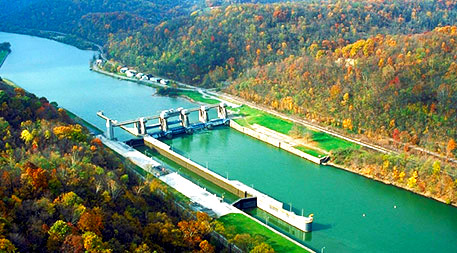
Since more hydropower seems inevitable, many are looking for ways to reduce its adverse impacts.
The DOE is working to develop modular “plug-and-play” hydropower units that could be installed in many different settings. Maintaining healthy natural stream functions is a primary objective of this effort to ensure that the expansion of hydropower does not expand its harmful impacts, also.
At the same time, the department is developing new environmental metrics to assess the environmental performance of new hydropower. The peer-reviewed process starts with defining what sustainability means for hydropower, then setting performance measures for different environmental effects, such as fish migration, energy efficiency and greenhouse gas emissions.
Battey says that a major share of the growth will come by adding generation to existing unpowered dams and other structures, like irrigation canals, navigational locks, and even pipelines. There are about 2,200 dams in the U.S. producing hydropower, and about 85,000 that don’t. Of these, the DOE estimates that about 1,800 could be modified to generate electricity.
Fixing existing problems
Many environmental groups and local communities are focused on existing dams’ problems.
Restoring fish passage is a major focus. Many large dams were built without fish ladders and remain an absolute barrier to fish migration. Climate change makes this an even greater concern, because migratory species like salmon and steelhead need access to cold-water spawning habitat above dams as temperatures warm.
But adding fish ladders often exceeds the original construction cost of some large dams. So compromises include trap-and-haul programs, in which fish are collected and transported by tanker truck around dams, and motorized lifts in various configurations. The most unusual form is an experimental “salmon cannon” — developed with DOE support — that can shoot adult salmon over a dam through a tube.
Reforming the timing and intensity of water releases is another major focus. Natural systems evolved with highly variable river flows caused by storms, not the consistent, low-intensity water releases characteristic of hydropower generation. For example, short periods of high-velocity water releases have been conducted at Glen Canyon Dam on the Colorado River to mobilize accumulated sediment in the river channel, helping restore riparian habitat. Such variable flows also please those who like river recreation, such as rafters and kayakers.
Research is also under way to minimize greenhouse gas emissions from reservoirs. Reservoirs may emit substantial amounts of methane, a powerful greenhouse gas, when vegetation and algae decay with changing water levels. Solutions may include controlling erosion in upstream watersheds and managing water elevation more carefully, especially during warm seasons.
Removing trapped pollutants
Reservoirs also trap pollutants left behind by past industrial practices, which flow downstream and concentrate behind dams. These chemicals can accumulate in fish, making them dangerous for people and wildlife, and pose a health hazard in drinking water.
Removing pollutants trapped in a reservoir presents a huge logistical challenge.
One solution has emerged at Mirror Lake in Dover, Delaware. The lake, originally a natural water body, was modified years ago by constructing a small weir to control the water elevation. Its sediments are contaminated by legacy industrial waste, including PCBs, dioxins, pesticides and mercury. A longstanding advisory warns against consuming fish from the lake — a condition common to thousands of reservoirs worldwide.
Upal Ghosh, professor of chemical engineering at the University of Maryland, Baltimore County, developed a method to deal with such waste using SediMite, a product that mixes activated carbon with clay or sand into pellet form. The pellets are dispersed on the water surface and then sink to form a layer on the lake bed that absorbs and caps the contaminants.
The Delaware Department of Natural Resources and Environmental Control tried the treatment at Mirror Lake in 2013. The $1 million project dispersed 79 tons (72 metric tons) of the activated carbon material over the lake surface — the first real-world application of the method.
Tests after one year showed a 70 percent reduction of PCB levels in the water, says Rick Greene, an environmental engineer with the state. They also showed a 60 percent decline of PCBs in fish tissue, a change previously expected to take 25 years if the lake had been left to flush out on its own.
The researchers recently took samples to assess the lake after three years. Greene hopes that the results will allow the state to lift its fish consumption advisory, giving people access to this local food supply again — something previously expected to take 50 more years.
“That’s just a long time, and it’s downright depressing when you think about it,” Greene says. “We see this as a major game changer for improving not only water quality but also fish health.”
Coming up for review
Altering reservoir functions is difficult because many dams are locked into very long regulatory licensing terms — as long as 50 years in the United States. Many also have flood protection as a primary function, so water storage levels and release practices are governed by rigid safety rules.
Only now are many of America’s largest hydroelectric reservoirs coming due for new licenses, a process overseen by the Federal Energy Regulatory Commission. In many cases, this represents the first time that many large dams have been completely re-examined in the context of contemporary environmental laws, like the Endangered Species Act and Clean Water Act.
Among other requirements, FERC can order dam owners to release more water for habitat and recreation, and require fish passage facilities on dams that have never had them. It can even order a dam to be removed. However, it has not yet tackled the problem of greenhouse gas emissions in any relicensing effort.
The Penobscot River in Maine illustrates the potential. Numerous hydroelectric dams on the river, under different owners, came due for relicensing in the late 1990s and early 2000s. In the middle of that process, in 1999, they were consolidated under a single owner, PPL Maine.
This was a convenient result of energy-industry deregulation by the U.S. government, which made it more attractive for some companies to buy and sell hydropower assets, says Andy Goode, vice president of U.S. programs at the Atlantic Salmon Federation.
Goode helped lead an effort by a number of organizations to work with PPL Maine to reform operation of all its Penobscot dams. The conditions they negotiated became part of a new 50-year operating license issued by FERC.
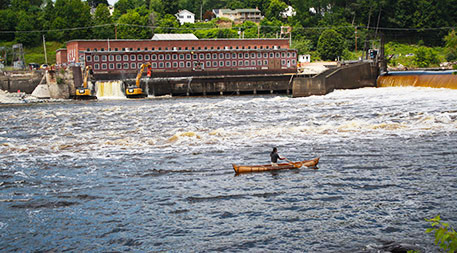
The project became known as the Penobscot River Restoration Trust. It wrapped up in 2016 after more than a decade of work, resulting in improved fishery flows, removal of two functioning hydroelectric dams and decommissioning of a third. Those dams were purchased and decommissioned by a coalition of environmental groups, which raised $25 million for the effort.
“We pretty much took a look at every dam on the river and figured out how we might be able to incorporate that dam into an overall solution,” Goode says.
The project has already seen results: Three fish species have returned in numbers not seen in decades — including river herring, American shad, and Atlantic salmon — and improvements in several other species are anticipated. And this was achieved without reducing total hydroelectric output because two remaining dams got additional generation capacity and a mothballed plant was put back in operation.
Looking holistically
The Penobscot is a rare case in which the concept of “basin planning” has been applied to hydropower reform. Rather than focus on improving a single dam, basin planning examines all the dams in a river basin or watershed to find solutions at the ecosystem scale. The goal is to reduce a project’s environmental footprint while maximizing energy and water resources.
While basin planning has been applied successfully to new hydropower development — notably by the Tennessee Valley Authority in the 1930s — its application to contemporary biodiversity and sustainability challenges is still rare. Another example in Tanzania involved a basinwide approach to reallocating water from the Pangani River, which has seen flows decline due to climate change.
Such efforts are challenging, because multiple dams in the same basin often have different owners and even different functions, and their licensing and regulation occur on separate timetables.
A proposal in California is approaching basinwide water challenges differently. The $4.4 billion Sites Reservoir is an “off-stream” project, meaning it would not dam a river but would store water pumped into an arid valley from the Sacramento River, then generate electricity when the water is released.
But making electricity is not the primary focus. Jim Watson, general manager of the Sites Joint Powers Authority, said the reservoir would be filled during flood events, when the Sacramento River has surplus water. It would then be released to satisfy water quality rules or provide fishery flows when existing reservoirs in the Sacramento basin don’t have enough water, and the water would then flow to buyers downstream. Those existing reservoirs, owned by the state and federal governments, are increasingly challenged to meet environmental requirements amid growing water demand and emerging effects of climate change.
“We’re really looking at how to create this flexible operation that can adjust to different priorities over time,” Watson says. “So as we see the effects of climate change, we can reprioritize how the water is put to use and adjust the timing of that water.”
In short, Sites is a new reservoir with environmental benefits as a primary objective. That’s a shift in focus that may become a lot more common in the hydropower world.
Matt Weiser is a journalist based in Washington, D.C. This post originally appeared at the website Ensia.
Weekly Newsletter
Get building science and energy efficiency advice, plus special offers, in your inbox.




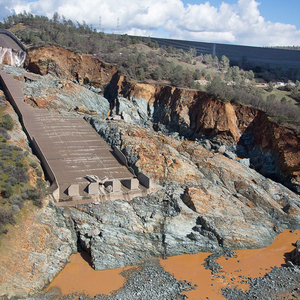
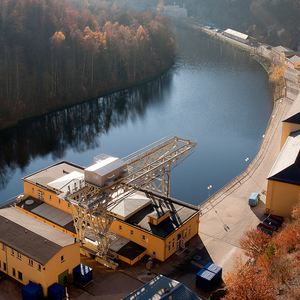
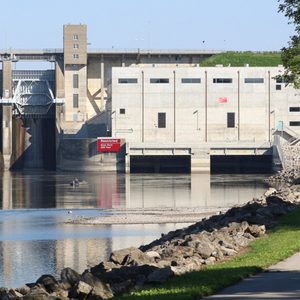
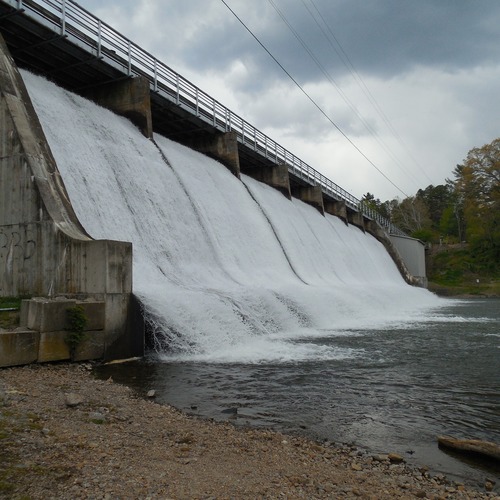






0 Comments
Log in or create an account to post a comment.
Sign up Log in